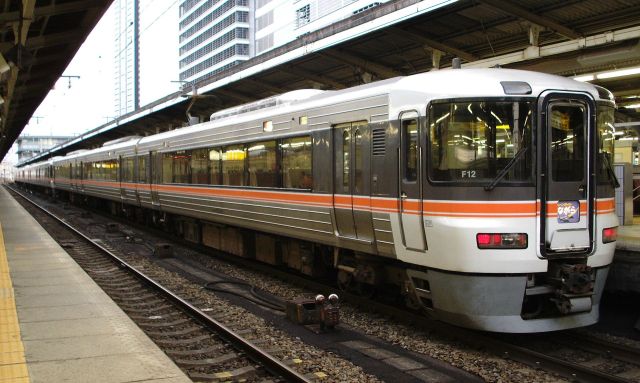
A sad day for travellers, especially Seishun 18 ticket holders.
While Japan’s Shinkansen bullet trains get all the limelight on the international stage, where they’re loved for their punctuality, speed and spick-and-span interiors, there are plenty of other Japanese trains equally deserving of our love and attention.
The Moonlight Nagara is one such train, reliably ferrying passengers across the land on long-haul overnight trips between Tokyo and Gifu, spanning a total of five prefectures and covering a distance of roughly 442 kilometres (275 miles).
▼ The six-hour-40-minute train journey takes around nine hours by car, using expressways.
The current rapid overnight train service, operated by Central Japan Railway Company and East Japan Railway Company, has been active since 1996. However, in recent years its popularity has declined due to competition from cheap overnight bus services, and after its schedule was reduced to busy seasonal periods only, it’s now been announced that the service will stop running altogether.
▼ The 165 series Moonlight Nagara in 2000
▼ And the 183/189 series in 2007
The announcement came as sad news for many, but nobody is feeling the loss more than users of the Seishun 18 Kippu. This discounted ticket package–limited for use during four weeks in winter, five weeks in spring, and around seven weeks in summer–contains five days’ worth of unlimited travel on local and regular Japan Railways express trains for just 2,410 yen (US$23.24) per day.
▼ We once used the ticket to travel with a discount to Korea by ferry.
Considering a one-way journey from Tokyo Station to Gifu’s Ogaki Station can cost around 11,660 yen one-way on the Shinkansen, being able to travel the same distance for almost a fifth of the price makes the Seishun Kippu a great deal for both local and international travellers. The only hurdle is having to research local train schedules so you can line up transfers efficiently between stations to cover as much ground during the one-day time limit on the ticket.
And that’s where the Moonlight Nagara steps in, making things easy by covering a large stretch of the mainland without the need for transfers, and doing it at a convenient time for travellers too. Departing Tokyo Station at 11:10 p.m. and arriving at Ogaki Station in Gifu Prefecture at 5:50 a.m.–or in the reverse direction, departing Ogaki Station at 10:48 p.m. and arriving in Tokyo at 5:05 a.m.–allows for travellers to hop on the train after a day of sightseeing and step out again with another full day of sightseeing ahead of them, while saving on the cost of overnight accommodation as well.
Since 2009, the Moonlight Nagara has been running during the same seasonal periods the Seishun 18 Kippu tickets were valid for, but the service has been off the rails since last spring due to the drop in tourists brought about by the pandemic. Rail operators say the drop in passengers using the overnight train, and the ageing vehicles on the line, led to their decision to permanently suspend the service.
▼ The current 185 series train will therefore retire from regular operations without a ceremonial final run, which is disappointing news for rail enthusiasts.
People in Japan shared fond memories of the train online, with comments like:
“I used to love riding the Moonlight Nagara! A symbol of my youth!”
“I always rode this train with the Seishun 18 Kippu. Such a convenient service.”
“I loved riding this route when I was a high school student and didn’t mind sleeping in a seat. I feel sorry for the students who won’t get to enjoy that same sense of adventure.”
“It seems apt for it to fade away into the night. Thank you very much for the moonlight!”
“I couldn’t have travelled to Comiket in Tokyo without this train. Thank you for your hard work!”
The train’s permanent suspension marks the end of the line for the beautifully named Moonlight branding as well. However, where one train door closes another opens, and if you have a bit more money to spare, you can always hop on one of the country’s sleeper trains for a luxury overnight experience.
Sources: Traffic News via Hachima Kikou
Top image: Wikipedia/Rsa
Insert images: Wikipedia/まも, Wikipedia/Takasunrise0921, Wikipedia/Rsa
● Want to hear about SoraNews24’s latest articles as soon as they’re published? Follow us on Facebook and Twitter!

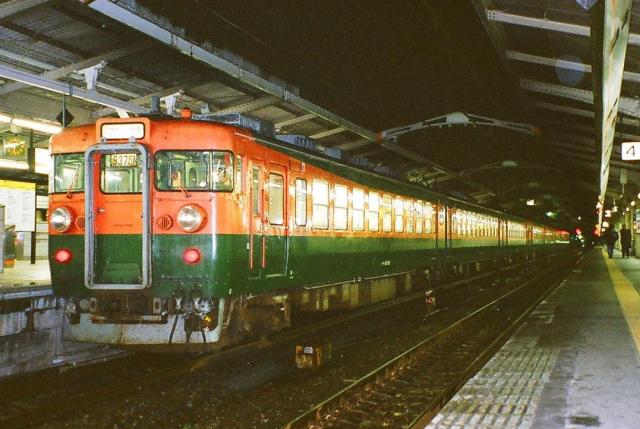
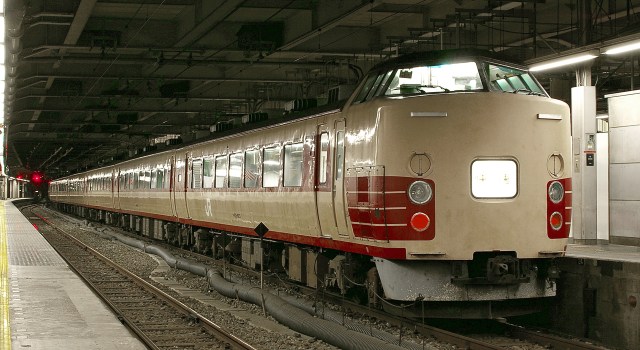
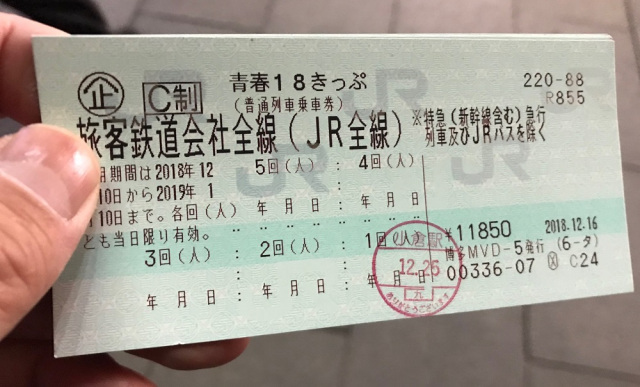
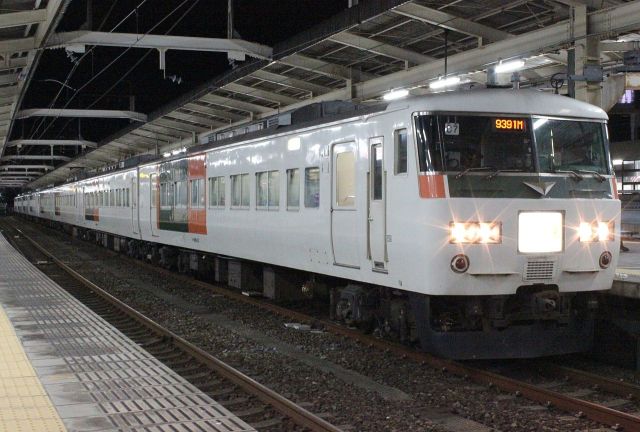
 How to travel from Tokyo to Hiroshima by train for 500 yen
How to travel from Tokyo to Hiroshima by train for 500 yen Ads for JR’s “Seishun 18” rail pass celebrate the isolated beauty of Japan’s most far-flung stations
Ads for JR’s “Seishun 18” rail pass celebrate the isolated beauty of Japan’s most far-flung stations All-you-can-ride Shinkansen deal coming to Japan for a limited time
All-you-can-ride Shinkansen deal coming to Japan for a limited time Why does it take so long for Japanese trains to start running again after an accident?
Why does it take so long for Japanese trains to start running again after an accident? New Japan rail pass gives you a week of free rides in a huge space to chase the cherry blossoms
New Japan rail pass gives you a week of free rides in a huge space to chase the cherry blossoms McDonald’s new Happy Meals offer up cute and practical Sanrio lifestyle goods
McDonald’s new Happy Meals offer up cute and practical Sanrio lifestyle goods All-you-can-drink Starbucks and amazing views part of Tokyo’s new 170 meter-high sky lounge
All-you-can-drink Starbucks and amazing views part of Tokyo’s new 170 meter-high sky lounge Studio Ghibli glasses cases let anime characters keep an eye on your spectacles
Studio Ghibli glasses cases let anime characters keep an eye on your spectacles Super Nintendo World expansion gets delayed for several months at Universal Studios Japan
Super Nintendo World expansion gets delayed for several months at Universal Studios Japan Starbucks reopens at Shibuya Scramble Crossing with new look and design concept
Starbucks reopens at Shibuya Scramble Crossing with new look and design concept Beautiful Sailor Moon manhole cover coasters being given out for free by Tokyo tourist center
Beautiful Sailor Moon manhole cover coasters being given out for free by Tokyo tourist center More foreign tourists than ever before in history visited Japan last month
More foreign tourists than ever before in history visited Japan last month Hamster abandoned at Tokyo ramen restaurant gets new home
Hamster abandoned at Tokyo ramen restaurant gets new home The oldest tunnel in Japan is believed to be haunted, and strange things happen when we go there
The oldest tunnel in Japan is believed to be haunted, and strange things happen when we go there Arrest proves a common Japanese saying about apologies and police
Arrest proves a common Japanese saying about apologies and police Disney princesses get official manga makeovers for Manga Princess Cafe opening in Tokyo
Disney princesses get official manga makeovers for Manga Princess Cafe opening in Tokyo Beautiful new Final Fantasy T-shirt collection on the way from Uniqlo【Photos】
Beautiful new Final Fantasy T-shirt collection on the way from Uniqlo【Photos】 Is the new Shinkansen Train Desk ticket worth it?
Is the new Shinkansen Train Desk ticket worth it? Foreign English teachers in Japan pick their favorite Japanese-language phrases【Survey】
Foreign English teachers in Japan pick their favorite Japanese-language phrases【Survey】 Japanese convenience store packs a whole bento into an onigiri rice ball
Japanese convenience store packs a whole bento into an onigiri rice ball We try out “Chan Ramen”, an underground type of ramen popular in the ramen community
We try out “Chan Ramen”, an underground type of ramen popular in the ramen community Studio Ghibli releases Kiki’s Delivery Service chocolate cake pouches in Japan
Studio Ghibli releases Kiki’s Delivery Service chocolate cake pouches in Japan Japan’s bone-breaking and record-breaking roller coaster is permanently shutting down
Japan’s bone-breaking and record-breaking roller coaster is permanently shutting down New definition of “Japanese whiskey” goes into effect to prevent fakes from fooling overseas buyers
New definition of “Japanese whiskey” goes into effect to prevent fakes from fooling overseas buyers Our Japanese reporter visits Costco in the U.S., finds super American and very Japanese things
Our Japanese reporter visits Costco in the U.S., finds super American and very Japanese things Studio Ghibli unveils Mother’s Day gift set that captures the love in My Neighbour Totoro
Studio Ghibli unveils Mother’s Day gift set that captures the love in My Neighbour Totoro Foreign passenger shoves conductor on one of the last full runs for Japan’s Thunderbird train
Foreign passenger shoves conductor on one of the last full runs for Japan’s Thunderbird train Domino’s Japan now sells…pizza ears?
Domino’s Japan now sells…pizza ears? New Japanese KitKat flavour stars Sanrio characters, including Hello Kitty
New Japanese KitKat flavour stars Sanrio characters, including Hello Kitty Kyoto creates new for-tourist buses to address overtourism with higher prices, faster rides
Kyoto creates new for-tourist buses to address overtourism with higher prices, faster rides Sales of Japan’s most convenient train ticket/shopping payment cards suspended indefinitely
Sales of Japan’s most convenient train ticket/shopping payment cards suspended indefinitely Sold-out Studio Ghibli desktop humidifiers are back so Totoro can help you through the dry season
Sold-out Studio Ghibli desktop humidifiers are back so Totoro can help you through the dry season Japanese government to make first change to romanization spelling rules since the 1950s
Japanese government to make first change to romanization spelling rules since the 1950s Ghibli founders Toshio Suzuki and Hayao Miyazaki contribute to Japanese whisky Totoro label design
Ghibli founders Toshio Suzuki and Hayao Miyazaki contribute to Japanese whisky Totoro label design Doraemon found buried at sea as scene from 1993 anime becomes real life【Photos】
Doraemon found buried at sea as scene from 1993 anime becomes real life【Photos】 Tokyo’s most famous Starbucks is closed
Tokyo’s most famous Starbucks is closed One Piece characters’ nationalities revealed, but fans have mixed opinions
One Piece characters’ nationalities revealed, but fans have mixed opinions We asked a Uniqlo employee what four things we should buy and their suggestions didn’t disappoint
We asked a Uniqlo employee what four things we should buy and their suggestions didn’t disappoint Princesses, fruits, and blacksmiths: Study reveals the 30 most unusual family names in Japan
Princesses, fruits, and blacksmiths: Study reveals the 30 most unusual family names in Japan Nozomi Shinkansen bullet train abolishes low-priced unreserved tickets during peak travel seasons
Nozomi Shinkansen bullet train abolishes low-priced unreserved tickets during peak travel seasons Japan Rail now accepting suggestions for how to use a car on the Nozomi bullet train in March 2022
Japan Rail now accepting suggestions for how to use a car on the Nozomi bullet train in March 2022 We channel Sen from Ghibli’s Spirited Away and travel to a Japanese train station by the sea
We channel Sen from Ghibli’s Spirited Away and travel to a Japanese train station by the sea West Japan’s new sleeper train looks more luxurious than most hotels
West Japan’s new sleeper train looks more luxurious than most hotels Tokyo airport’s new train line to make getting into, out of the city easier for JR pass holders
Tokyo airport’s new train line to make getting into, out of the city easier for JR pass holders Drunken salaryman’s solution to barely missing the last train: Ride on the outside of it
Drunken salaryman’s solution to barely missing the last train: Ride on the outside of it Free Shinkansen tickets for kids travelling with parents during special JR promotion
Free Shinkansen tickets for kids travelling with parents during special JR promotion Tokyo farewells Japan’s only double-decker Shinkansen with a special escalator at the station
Tokyo farewells Japan’s only double-decker Shinkansen with a special escalator at the station $2.34!? Cheapest bullet-train ride in Japan lasts 3 minutes, but memories are forever【Photos】
$2.34!? Cheapest bullet-train ride in Japan lasts 3 minutes, but memories are forever【Photos】 Japan Railway to allow dogs to ride without cages on special Tokyo-Izu train
Japan Railway to allow dogs to ride without cages on special Tokyo-Izu train These are the 11 most crowded trains in Japan…and surprise! They’re all in the Tokyo area
These are the 11 most crowded trains in Japan…and surprise! They’re all in the Tokyo area The Japanese train station where staff bow to departing passengers
The Japanese train station where staff bow to departing passengers What is this weird train spotted at a Japanese railway station?
What is this weird train spotted at a Japanese railway station? Japanese train driver falls asleep while operating train
Japanese train driver falls asleep while operating train Japan’s Shinkansen bullet trains to remove all onboard payphones
Japan’s Shinkansen bullet trains to remove all onboard payphones
Leave a Reply